University of St Andrews
Type of resources
Topics
Keywords
Contact for the resource
Provided by
Years
Formats
Representation types
Update frequencies
-

Collection of North Pacific core-top foraminifera census data. Grant abstract: The geological record offers an invaluable window into the different ways earth's climate can operate. The most recent large-scale changes in earth's climate, prior to modern climate change, were the Pleistocene glacial cycles, which feature growth and disintegration of large ice sheets, rapid shifts in major rain belts, and abrupt changes in ocean circulation. Changes in atmospheric CO2 concentrations, reconstructed from air bubbles in ice cores, are intimately linked with these ice age climate events. Indeed the close coupling of CO2 and temperature over glacial-interglacial cycles has become an iconic image in climate science, a poster child for the importance of CO2 in climate, and the natural template against which to compare current man-made CO2 rise. However despite the high profile of glacial-interglacial CO2 change, we still don't fully understand its cause. The leading hypotheses for glacial CO2 change involve increased CO2 uptake by the ocean during ice ages, which is vented to the atmosphere during deglaciation. However despite decades of work these hypotheses have had few direct tests, due to a lack of data on CO2 storage in the glacial ocean. One of the most glaring holes in our understanding of ice age CO2 and climate change is the behaviour of the Pacific. This basin contains half of global ocean volume, and ~30 times more CO2 than the atmosphere, and so its behaviour will have global impact. It has also recently been suggested that the North Pacific may play an active role in deglacial CO2 rise, with local deep water formation helping to release CO2 from the deep ocean to the atmosphere. If correct, this hypothesis provides a new view of Earth's climate system, with deep water able to form in each high latitude basin in the recent past, and the North Pacific potentially playing a pivotal role in deglaciation. However few data exist to test either the long-standing ideas on the Pacific's role in glacial CO2 storage, nor the more recent hypothesis that North Pacific deep water contributed to rapid deglacial CO2 rise. Given the size of the Pacific CO2 reservoir, our lack of knowledge on its behaviour is a major barrier to a full understanding of glacial-interglacial CO2 change and the climate of the ice ages. This proposal aims to transform our understanding of ice age CO2 and climate change, by investigating how the deep North Pacific stored CO2 during ice ages, and released it back to the atmosphere during deglaciations. We will use cutting-edge geochemical measurements of boron isotopes in microfossil shells (which record the behaviour of CO2 in seawater) and radiocarbon (which records how recently deep waters left the surface ocean), on recently collected samples from deep ocean sediment cores. By comparing these new records to other published data, we will be able to distinguish between different mechanisms of CO2 storage in the deep Pacific, and to test the extent of North Pacific deep water formation and CO2 release during the last deglaciation. We will also improve the techniques used to make boron isotope measurements, and add new constraints on the relationship between boron isotopes and seawater CO2 chemistry, which will help other groups using this technique to study CO2 change. To help us understand more about the mechanisms of changes in CO2 and ocean circulation, and provide synergy with scientists in other related disciplines, we will compare our data to results from earth system models, and collaborate with experts on nutrient cycling and climate dynamics. Our project will ultimately improve understanding of CO2 exchange between the ocean and the atmosphere, which is an important factor for predicting the path of future climate change.
-
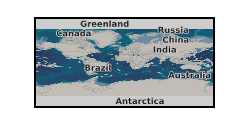
Provided here are in-situ Si and O isotope compositions of Detrital Jack Hills and Lachlan Fold Belt zircons. These data formed the basis of the research published as: Origin and significance of Si and O isotope heterogeneities in Phanerozoic, Archean, and Hadean zircon, Trail et al., (2018), PNAS 115 (41), 10287-10292 The data are provided in a single Excel spreadsheet, with multiple tabs, which are as follows: 1. Sample description and analytical method summaries 2. Solution and laser-fluorination data for characterisation of the standards used in the Ion Probe measurement sessions 3. Ion Probe (In-situ) Si and O isotope data for the Lachlan Fold Belt and Duluth Gabbro zircons 4. Ion Probe (In-situ) Si and O isotope data for the detrital Jack Hills zircons, as well as 207Pb/206Pb age estimates 5. Raw Ion Probe Si and O isotope data for LFB samples 6. Raw Ion Probe Si and O isotope data for Jack Hills samples 7. Ion Probe (In-situ) Si isotope data for the Lachlan Fold Belt zircons (utilising O- hyperion source)
-

Triple-sulfur isotope data from schists and carbonates in the Eoarchean Isua Greenstone Belt (3.7 Ga), using a new leaching technique and a multi-collector ICP-MS. The results reveal distinct pattern between the two lithologies and demonstrate an atmospheric contribution of sulfur in both cases. This may support the notion that these rocks represent metamorphosed marine sediments. However, hydrothermal alteration needs to be assessed in more detail to verify the antiquity of these signatures.
-

Geochemical data: %C, %OC, %IC, %N Physical Property data: Wet and dry bulk density, water content, porosity. Sediment cores extracted from Offshore Region: Loch Sunart NM 70277 63360, 56.705259, -5.7545471. For more information see published report, Substantial stores of sedimentary carbon held in mid-latitude fjords. / Smeaton, Craig; Austin, William; Davies, Althea; Baltzar, A.; Abell, R. E.; Howe, J. A. doi:10.5194/bg-13-5771-2016
-
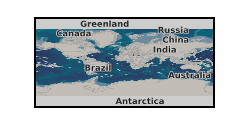
Data produced from NERC Grant NE/M001156/1 - Fe speciation data (FeHR/FeT, and FePy/FeHR), collected following methods outlined in Izon et al., 2017, Proceedings of the National Academy of Sciences (PNAS); % Carbonate, determined gravimetrically; d34SV-CDT for sedimentary pyrite, analysed by Iso-Analytical Laboratories, Cheshire, using standard EA-IRMS techniques; d15N of bulk rock, analysed by nano-EA-IRMS, following methods described in Polissar et al., 2009, Analytical Chemistry; d15N of kerogen extracted following the methods described in Zerkle et al., 2017, Nature, analysed by nano-EA-IRMS; d13C of organic carbon, measured on decarbonated rock powders by standard EA-IRMS techniques; %TN and TON % determined by standard EA-IRMS of bulk rock and extracted kerogen, respectively. Drill core samples were taken through the 2.7Ga old Manjeri Formation of the Belingwe Greenstone belt, Zimbabwe, which overlies more ancient gneissic basement with very well-exposed unconformity (Bickle et al. 1975). The Manjeri Formation, typically 50-150m thick, exhibits a deepening succession of facies (Grassineau et al., 2002, Hunter et al., 1998). It is directly overlain by komatiitic basalts and komatiites of the Reliance Fm., dated at 2692±9 Ma (Pb-Pb whole rock; Chauvel et al., 1993). The metamorphic grade of the Manjeri succession is variable, but generally remarkably low (Abell et al. 1981). Three drill cores were taken in the Manjeri Formation. The NERCMAR drill core has been described in detail by Grassineau et al., 2002. Drill cores A and B were collected some km to the north, in the upper Manjeri Formation.
-
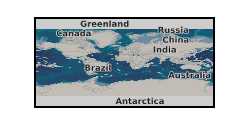
Concentrations of gaseous and aqueous fixed nitrogen products and isotopic measurements of aqueous nitrite and nitrate in spark discharge experiments. Spark experiments were conducted at the University of St Andrews in the St Andrews Isotope Geochemistry Lab (StAIG) between November 2020 and February 2022. Analysis of gaseous products was carried out with a quadrupole mass spectrometer (Hiden Analytical ExQ Quantitative Gas Analyser) in St Andrews. Measurement of concentrations of aqueous nitrite and nitrate and their isotopic composition were carried out for one part of the samples in St Andrews and for the other part at Brown University, Rhode Island, USA. The data was collected to investigate the efficiency of nitrogen fixation by lightning in different gas compositions, resembling the atmospheres of modern and early Earth. The isotope data was used to determine the role of lightning in the delivery of nutrients to the earliest ecosystems on Earth by comparing our results to measurements of sedimentary rock samples from the Archean. The experimental set up was built by Patrick Barth and Eva E. Stüeken, the experiments were conducted by Patrick Barth, Lukas Rossmanith, and Yuqian Peng, the analysis conducted by Patrick Barth, Lukas Rossmanith, Yuqian Peng, and Wendell Walters with support from Mark Claire, and the data was analysed by Patrick Barth, Eva E. Stüeken, Christiane Helling, and Wendell Walters. This dataset includes all data that is reliable and was used in the accompanying publication.
-
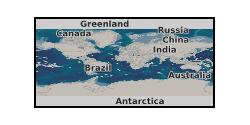
The dataset consists of a spreadsheet containing whole rock geochemistry (Major and trace elements, Hf isotopes) from 7 samples and zircon U-Pb, O, Hf isotope and trace elements compositions (>200 spots on zircons from 7 samples) analysed by Ion Microprobe (NERC EIMF) and MC-LA-ICP-MS (NIGL). The samples are Eoarchaean amphibolite-facies mafic gneisses and a pegmatite as well as granulite-facies mafic gneiss and migmatite (melano- and leucosome) from the Kapuskasing uplift in Ontario, Canada.
-
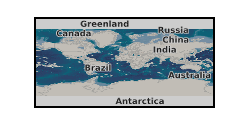
Organic carbon and total nitrogen isotope data for black shales and U-Pb data for apatite solutes from the Burzyan and Yurmatau groups in the Urals, Russia. For detailed discussion see Stüeken, E.E., Kuznetsov, A.B., Vasilyeva, I.M., Krupenin, M.T. and Bekker, A., 2021. Transient deep-water oxygenation recorded by rare Mesoproterozoic phosphorites, South Urals. Precambrian Research, 360, p.106242.
-
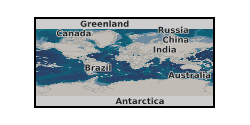
Nitrogen abundances in red shales are shown to be suitable as a biosignature that may be applicable to red beds on Mars. The data set includes organic carbon and nitrogen abundances and isotopic ratios, carbonate carbon and oxygen isotope ratios, and metal abundances. We evaluate potential abiotic effects and discuss diagenetic scenarios that lead to an enrichment of ammonium in clay minerals.
-
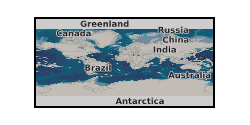
Isotope analysis data. Project details: The continental crust is our only archive of Earth history; not just of the crust itself but of the hydrosphere, atmosphere and biosphere, and of the deep Earth through its interactions with the crust. This archive, like the rock record itself, is incomplete and much effort is focused on interrogating the crust to gain a clearer and more complete picture of Earth history. The continental rock record is episodic with, for example, ages of igneous crystallization, metamorphism, continental margins, and seawater and atmospheric proxies distributed about a series of peaks and troughs that in part correspond with the cycle of supercontinent assembly and dispersal. At the core of the debate is what these well-established peaks of ages in the geological record represent and how they develop. The peaks of ages correspond with periods of global assembly of continents to form supercontinents. The project will address whether the peaks of ages are primary features associated with supercontinent assembly or break up, or they are they secondary features representing greater preservation potential at the times of supercontinent assembly. Our work will focus on the Rodinian supercontinent cycle, which extends from initiation of convergent plate interaction around 1.7 Ga, to continental collision at 1.1-1.0 Ga during the Grenville orogeny, to final breakup of the supercontinent by 0.54 Ga. Detrital zircons from sedimentary units throughout the supercontinent cycle provide a record of the magmatic activity for which the igneous rocks are often no longer preserved. We will determine (i) the ages ranges of magmatic activity preserved in the sedimentary rocks in the 600 Ma pre-collision phase, and (ii) how and when the distinctive Grenville peak of ages developed by comparing the zircon record from samples pre-, syn- and post- Rodinian supercontinent assembly with estimated volumes of magma and numbers of zircons produced during the same interval. This will differentiate primary generation processes from secondary processes, constraining when the dominant age peak developed, the tectonic processes that operated, and hence the method by which it developed. The wider implications of when the continental crust formed are considerable. Studies of continental growth continue to uncritically assume that the geological and isotopic record provide insight into processes of crust formation. Until it can be established whether the record is the outcome of generational or preservational processes, or a combination of both, then drawing conclusions on this fundamental question in the Earth Sciences are premature. If the record is a preservational record then this impacts on understanding continental growth through time and on secondary questions of how the crustal record is used to unravel the temporal evolution of the hydrosphere and biosphere, and the distribution of mineral deposits.
 BGS Data Catalogue
BGS Data Catalogue